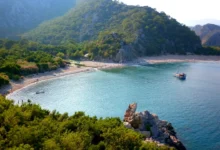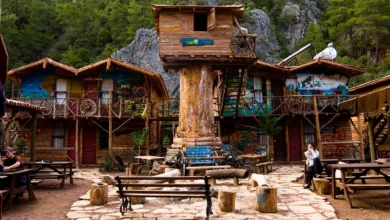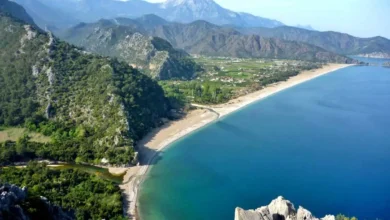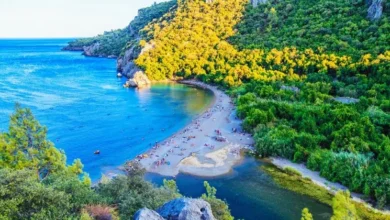Olympos Ancient City, located in the Kumluca district of Antalya and one of the most important settlements of the Lycian civilization, achieved a historical first this year. The Roman-era rock tombs, which had been hidden for many years under dense vegetation, have been meticulously brought to light and opened to visitors for the first time, being included in the ancient city’s tour route. This significant development offers a unique opportunity for those who wish to explore the rich history of Olympos.
Meanwhile, for detailed information about Olympos, we recommend checking our OLYMPOS TRAVEL GUIDE page.
Excavations Gaining Momentum with “Heritage for the Future Project”

Olympos, notable for its location on both banks of the river that flows into the sea, continues to captivate visitors with its deep-rooted history, impressive ruins, and unique nature. The excavation work that began in the ancient city in 2006 has gained significant momentum, especially within the scope of the Ministry of Culture and Tourism’s “Heritage for the Future Project,” with increasing allocations each year. To date, important artifacts such as Churches No. 1 and 3, the entrance complex, the episcopal palace, the bridge, the monumental tomb, the mosaic structure, the bathhouse, the sarcophagus of Antimakhos, and the port monumental tombs have been identified in Olympos, and efforts to fully uncover the historical fabric are ongoing.
Mysterious Cemetery Area Opened to Visitors

During the excavations carried out in the ancient city, both vaulted tomb chambers and large tomb structures containing sarcophagi were identified. This cemetery area, which had been closed to visitors for many years due to dense vegetation, was included in the tour route for the first time this year through extensive cleaning and arrangement works. Thanks to newly opened pathways, visitors will have the opportunity to walk through the cemetery area and see the historical ruins up close.
According to information provided by Assoc. Prof. Dr. Gökçen Kurtuluş Öztaşkın, head of the excavation and faculty member at Pamukkale University’s Faculty of Humanities and Social Sciences, continuous excavation work is being carried out for 12 months with increasing funding and support from the Ministry of Culture and Tourism. Last year, work focused on the southern necropolis of Olympos, continuing in the structures along the axis of the Necropolis and Harbor streets, starting from the western entrance of the city. Excavations are being conducted in these areas on both Roman-era tombs and early Byzantine-era civil residential structures.
Tombs Shed Light on Olympos’ Demographic Structure
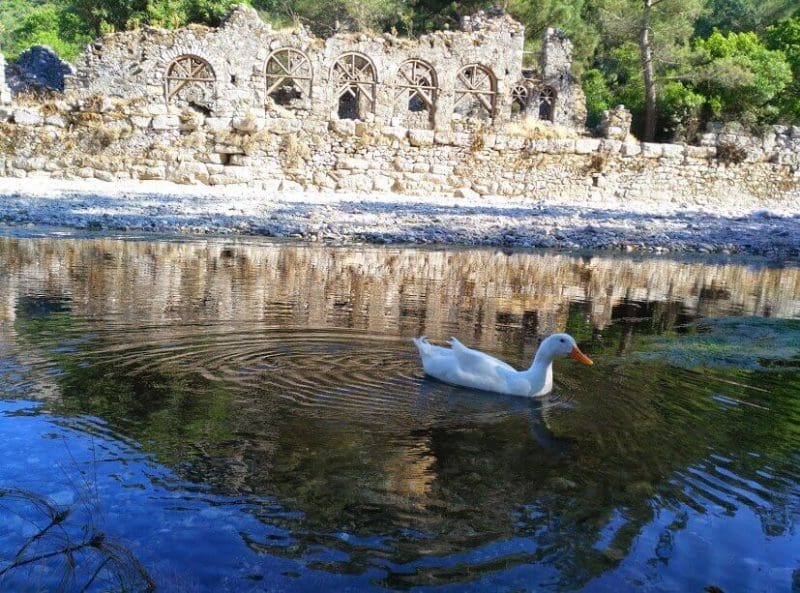
The tomb structures, which had been inaccessible until now due to the dense pine and laurel trees on the southern slope of the stream passing through the center of the city, were uncovered after vegetation clearing. Assoc. Prof. Dr. Öztaşkın emphasized that for the first time, the tomb area can both be viewed from the opposite slope and has been opened to visitors through arranged pathways. With the arrangement of the pathways, the rock tombs have been included in the new walking route.
Öztaşkın, this year’s vegetation clearing revealed vaulted tomb chambers, arranged in 3-4 rows ascending the slope. This area is a quite extensive cemetery, extending for approximately 400 meters, containing both vaulted tombs and larger room tombs with sarcophagi.
In the southern necropolis, where over 270 Roman-era tombs have been identified, documentation and epigraphic studies are also being carried out with great care. Among these tombs are those of Olympos’ wealthy citizens, as well as slaves and soldiers who served here during the Roman period. This data provides new and important information about the city’s demographic structure, shedding light on Olympos’ past.
Olympos Ancient City’s rock tombs offer visitors the opportunity to see these important Roman-era artifacts up close and experience the mysterious atmosphere of the ancient city. Are you ready to explore this historical discovery route?

